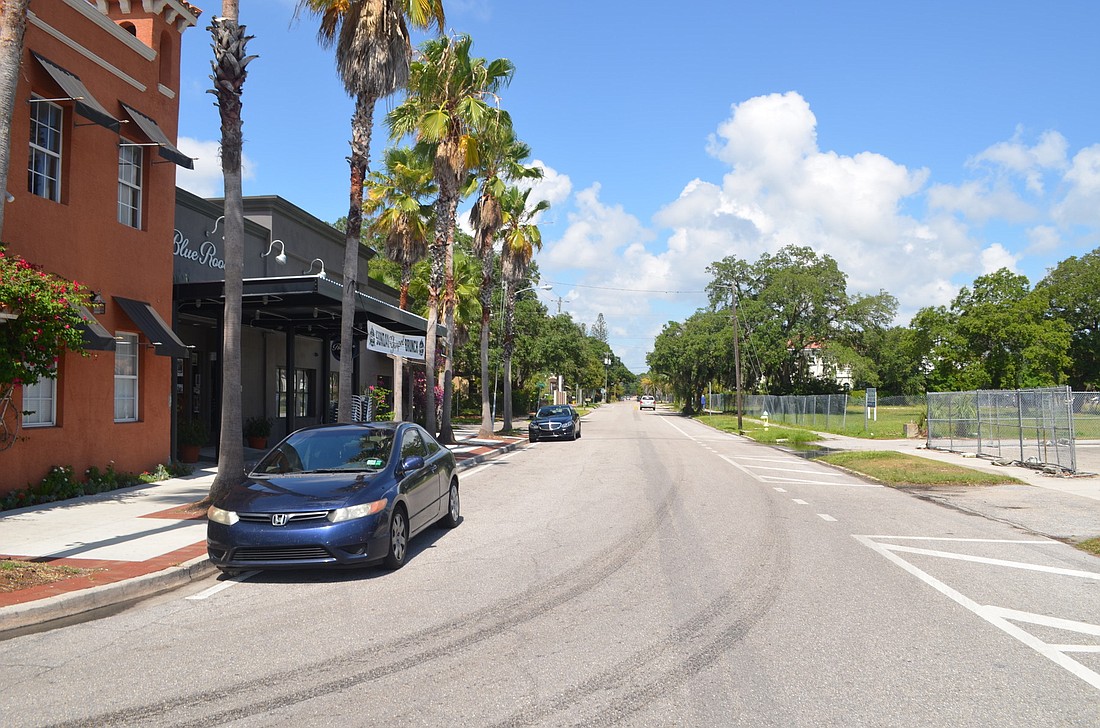- January 21, 2025
-
-
Loading

Loading

A proposal that would allow higher-density housing projects in the Rosemary District still has to make its way through city and state approval processes. In the meantime, residents and staff have offered their insight on the potential pros and cons of the plan.
At Saturday’s Coalition of City Neighborhood Associations meeting, city staff presented an overview of the proposed Rosemary Residential Overlay District, or R-ROD. The R-ROD would allow for housing projects with a density of 75 units per acre within the Rosemary District — three times greater than the current cap of 25 units per acre.
Developments within the R-ROD would still have to comply with many of the current regulations. Projects would still go through the city’s administrative approval process, and buildings would still have a height restriction of five stories. The overall density in the Rosemary District would also remain unchanged — though the larger projects would be allowed, the entire area would have to maintain an average density of 25 housing units per acre.
Ryan Chapdelain, a chief planner with the city, said the increased density provided benefits for a neighborhood in need of redevelopment. He said the current land-use designation in the Rosemary District called for roughly a 50-50 split between residential and other uses. As it stood, Chapdelain said, only about 25% of the Rosemary District is made up of residential units.
Chapdelain said an increased population in the Rosemary District would help combat problems stemming from crime and homelessness, while also allowing for businesses to succeed.
“Having more residents in Rosemary gives you more natural surveillance, more activity,” Chapdelain said. “Businesses begin to thrive, and overall, it’s good for the district.”
Karin Murphy, director of the city’s Urban Design Studio, approves of the inspiration behind the R-ROD, but said the overlay district may not be a long-term solution. A private developer, Rosalyne Holdings LLC, proposed the R-ROD and plans to develop about 450 apartments on 6.2 acres along Cocoanut Avenue. Murphy said Rosalyne Holdings’ project was in keeping with the New Urbanist principles that will guide the city’s forthcoming form-based code and the city should move to get it in place.
Still, she said, there were drawbacks to creating an across-the-board density increase for the Rosemary District. Other projects may not offer desirable housing types or have the ability to link up with public transit. The R-ROD, if approved, would sunset after four years.
Under a form-based code, Murphy said she hopes to have an incentive-based system to allow specific projects to have density increases. Within the R-ROD, however, property owners could sit on the land — made more valuable by the new density rules — with no intention of developing it themselves.
 “We are concerned it will have a speculative effect, driving the property values up and possibly leaving some missing teeth,” Murphy said. “We’d like to get a really nice project incorporated, but we’re being very thoughtful about what that long-term effect might be.”
“We are concerned it will have a speculative effect, driving the property values up and possibly leaving some missing teeth,” Murphy said. “We’d like to get a really nice project incorporated, but we’re being very thoughtful about what that long-term effect might be.”
Residents at Saturday’s meeting asked whether property owners might be adversely affected by the cap created by the 25-units-per-acre average. Chapdelain said it was unlikely that the area would develop that quickly, due to the number of non-residential properties in the area.
Even if there were a development boom, the city is required to intervene before that cap is hit. If Rosemary District reached 85% of its housing maximum, a provision in the proposal would require the City Commission to meet and potentially amend the R-ROD.
As a result, Chapdelain said, the R-ROD wouldn’t create a rush to build high-density developments before it’s too late.
“It’s not really a first-come, first-serve basis,” Chapdelain said. “Nobody’s density is going to be taken from them.”
Several residents at Saturday’s meeting said that, even with high-density developments in the Rosemary District, it would be difficult to link the neighborhood to the downtown core. They asked staff to look at ways to make Fruitville Road easier for pedestrians to cross, so that the entire city might benefit from the improvements to the Rosemary District.
Chapdelain said the city plans to issue a request for proposals in the fall to evaluate the stretch of Fruitville between U.S. 41 and U.S. 301. He said Tax Increment Financing funds might be available to change the configuration of the road or create pedestrian sleeves across Fruitville. He agreed that, if the neighborhood is to succeed, it was important to link it to the rest of the city.
“That may be critical to the success of the Rosemary, having that connection to the heart of downtown,” Chapdelain said. “That will be something we’re working on.”
Contact David Conwat at dconway@yourobserver.com.